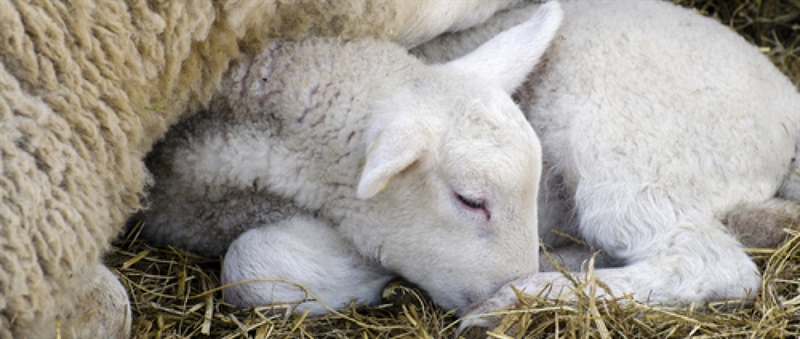
Ensuring a hygienic environment at lambing time
The first step is to make sure your lambing pens are thoroughly cleaned before the ewes come inside to lamb using a DEFRA-approved disinfectant. Once the pen has dried out bed it up with plenty of clean, dry bedding ready for the new occupants. Good hygiene is also vital during lambing, so it's well worth wearing disposable, close-fitting protective gloves when lambing any ewes that need assistance.
Avoid lambing ewes in small pens to keep bedding as clean and dry as possible. Any obvious wet straw and afterbirth should be cleaned out and fresh, clean straw provided between ewes to reduce mis-mothering and disease issues. Putting lime in the bottom of pens can also keep them dry and minimise potential disease problems.
Cleaning feeding equipment
Attention to detail when cleaning feeding equipment is also crucial and it's easily something that can be overlooked when you're under pressure at lambing time. But taking the time to disinfect teats, tubes, mixing buckets and other utensils will definitely pay dividends in lamb health.
Unfortunately, incorrect feeding practices can cultivate the perfect environment for disease-causing bacteria to survive and these bacteria will be ready to contaminate any milk fed to surplus lambs.
Avoiding biofilms
Incorrect cleaning practices can lead to the development of a biofilm. This is an invisible layer of protein and fat residue that builds up on feeding equipment and on surfaces that are not properly cleaned. Bacteria bind to these protein and fat residues and begin to multiply quickly, producing sticky, sugary substances that allow further milk residues to stick to the biofilm. This biofilm then begins to create its own environment, which the bacteria can thrive in. The bacteria can also produce substances to protect themselves against being moved.
The biofilm layer is also able to protect microbes that would have not previously survived in this environment, allowing a greater range of harmful bacteria to be present on feeding equipment.
Unfortunately, a biofilm is usually undetectable by eye. However, an extreme build up may cause a yellow or white scum to appear, and the surface may feel rough or slimy.
How to wash feeding equipment
Every utensil used for feeding any surplus lambs with ewe milk replacer must be carefully cleaned and sanitised with a strong disinfectant after every feeding and allowed to dry thoroughly. This includes teats, stomach tubes and any other feeding item. Nipple buckets should also be taken apart and cleaned effectively.
Follow the Volac six step feeding equipment cleaning process:

- Rinse: use lukewarm water (32-38°C). DO NOT USE HOT WATER because this allows milk proteins and fats to stick more tightly to feeding equipment surfaces. Aim to reduce all dirt and milk residue.
- Soak: use HOT water for soaking (54-57°C) and add liquid detergent and bleach (or a chlorinated alkaline detergent). Soak for at least 20 minutes.
- Scrub: remove any remaining residues from the feeding equipment using a brush to loosen any solids
- Wash: re-wash all of the equipment in HOT water (at least 49°C) to remove any remaining residues
- Rinse: rinse the inside and outside of equipment using an acid sanitiser. This lowers the surface pH and makes it very difficult for any remaining bacteria to survive.
- Dry: equipment should be left on drying racks to dry thoroughly. DO NOT stack buckets inside each other and certainly DO NOT sit feeders upside down on a concrete floor because this will provide bacteria with a perfect proliferation environment.
Common incorrect washing practices
- Initial rinse water is too hot - particles will bond tighter to feeding equipment surfaces
- Brushing is not thorough enough - leaves excess debris on the feeding equipment
- Washing with no chemicals - biofilms will be undisturbed
- Main washing water is too cool - particles will stick back onto the surface of feeding equipment
- Damaged feeding equipment - offers rough and cracked surfaces that are easy for biofilms to hang onto. For this reason always discard any broken feeding equipment
Ensuring good hygiene will help to give your lambs the best start in life.
Lambing top tips